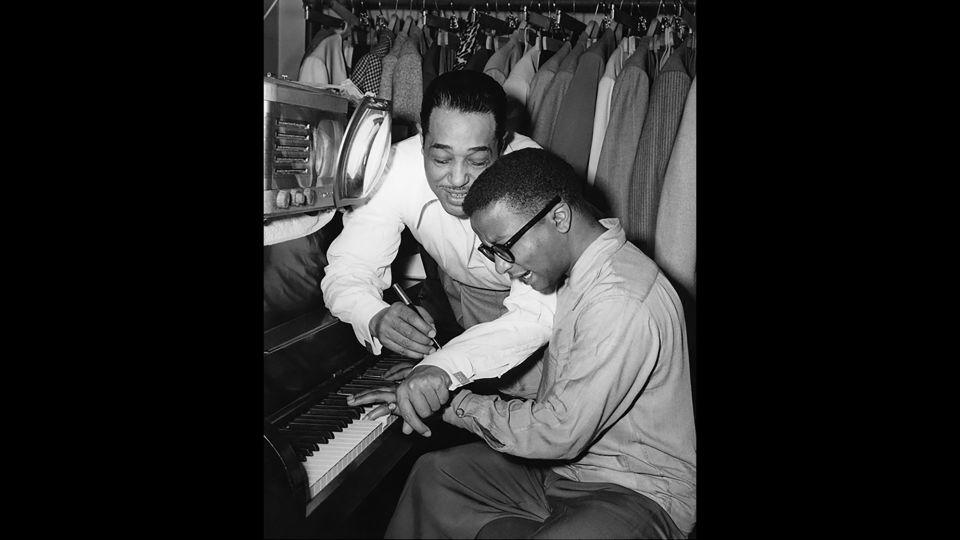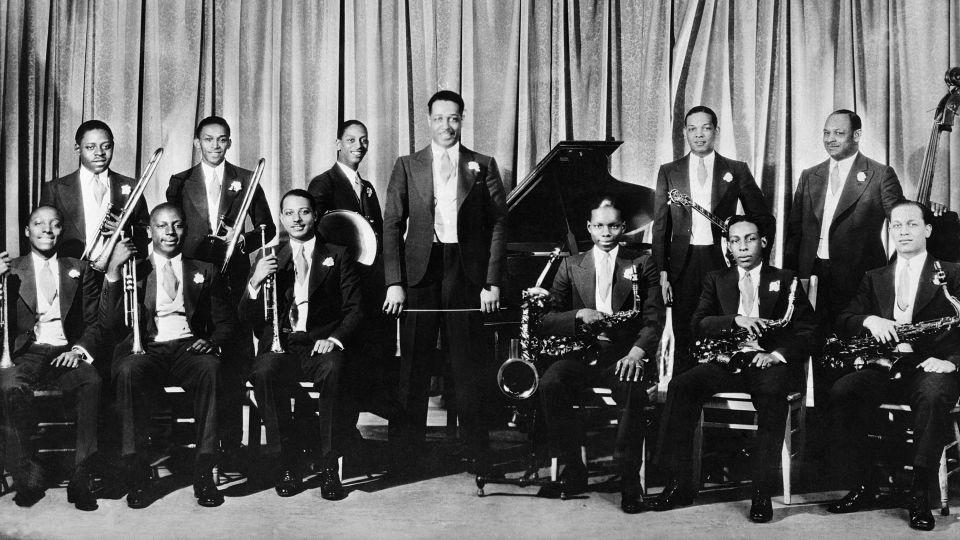Opinion: What made Duke Ellington a true genius
- Oops!Something went wrong.Please try again later.
- Oops!Something went wrong.Please try again later.
Editor’s Note: Sammy Miller is a Juilliard-trained jazz drummer and music educator. The views expressed in this commentary are his. View more opinion at CNN.
This spring marks both the 50th anniversary of Duke Ellington’s death, and what would have been his 125th birthday. Why is it that out of the hundreds of musicians who electrified the nightclubs of Harlem, that “Duke” was the name that became synonymous with jazz? What insight should we glean from the remarkable career of this bandleader, pianist and composer?
His early beginnings certainly did not portend musical greatness. Like many children, Ellington refused to practice — preferring swinging at baseballs to swinging rhythms on the piano. In fact, when his piano teacher hosted a recital with all of her pupils, “I was the only one who could not play his part,” Ellington wrote in his 1973 autobiography.
It wasn’t until puberty that Ellington became more interested in music, motivated primarily by his desire to attract women. What’s more, Ellington was never a strong reader of music, as he was primarily self-taught, and his journey was not a straight shot to the top: his first foray into the New York music scene only lasted a few months before he returned home to Washington D.C., having not been able to find enough work. While the Harlem Renaissance was in full swing, the scene was competitive and Ellington hit his cue too early.
All of this changed in 1924 when Ellington found his charter bandmates and began incorporating them into his creative process. While other bands at the time relied on prewritten arrangements purchased from publishing houses, Ellington’s subpar reading skills made utilizing stock charts challenging. He quickly turned this deficit into an advantage, crafting his own, by ear, with his band.
Unmoored from dogmatic conservatory frameworks, Ellington and his band were able to imprint upon their arrangements their own unique style — pairing a duality of tight and sophisticated jazz age rhythms with unfettered lowdown blues and the unmistakable growling and wailing instrumental solos that became their trademark.
As Ellington put it, his compositions were “a continuing autobiography… my music talks about the new people I keep meeting, especially the new men who pass through the band and sometimes stay. I use their particular ways of expressing themselves and it all becomes part of my own style.”
To know Duke Ellington is to know his band — although few can name its other members today. The defining sound of his charter band came from drummer Sonny Greer. Before drum sets were standardized, Greer chose to incorporate gongs, timpani, and chimes, giving the band a more orchestral percussion palate.
Bubber Miley, an early Ellington trumpeter, adopted a niche style of New Orleans musicians, which took a toilet plunger to create the growling “wah wah” sound that emulated the human voice, and popularized it on Ellington’s bandstand. Miley’s style was so infectious that it influenced Jimi Hendrix’s “wah” guitar pedal nearly fifty years later.
Harry Carney, who played lush baritone saxophone solos in Ellington’s band, revolutionized the bari sax: taking it from a novelty instrument to a staple of every big band to follow.
Yet Ellington’s most intimate relationship was with fellow pianist Billy Strayhorn, who was, in Ellington’s words, “my right arm, my left arm, all the eyes in the back of my head, my brain waves in his head, and his in mine.” Ellington met a young Strayhorn when he was performing in Pittsburgh; Strayhorn confronted Ellington backstage and hopped on a piano to show how he would have arranged the piece differently. Ellington was so struck by his skill that he hired Strayhorn.
Strayhorn became an arranger, composer, and utility player for whatever was needed to support the ensemble. Strayhorn was actually the composer of Ellington’s signature tune “Take the ‘A’ Train”— the lyrics were inspired by directions Ellington gave to Strayhorn to get to his house: You must take the “A” train/To go to Sugar Hill way up in Harlem.

Their sound was unique to them as a collective. Ellington’s genius was to bring out the best of his fellow bandmates and feature the talents of each musician. “Ellington plays the piano, but his real instrument is the band,” Strayhorn said.
Ellington had a remarkable ability to elevate those around him and allow them to elevate him in turn. He was inspired by his bandmates and, somewhat controversially, compiled their ideas to achieve musical greatness. This method has been the subject of debate in the artistic community with some seeing it as thievery, while others argue it is simply the natural creative process. “He’d steal like mad, no questions about it,” said Ellington’s valve trombonist Juan Tizol.
Another bandmate, Lawrence Brown, told Ellington directly: “I don’t consider you a composer. You are a compiler.” But from these men, Ellington was able to bring out the best and, without Ellington, these men would likely never have risen to the level of musical excellence they achieved with him. As Ellington’s trumpeter Clark Terry put it, “[Ellington is] a compiler of deeds and ideas, with a great facility to make something out of what would possibly have been nothing.”
As we enter the centennial of Ellington’s heyday, it’s worth examining what about his inimitable life and career is worth learning from, emulating, compiling, or, dare I say, stealing from?

Credit issues aside, Ellington’s genius was not being too proud to let others into his creative process and allowing others to supplement where he was deficient. He loved hearing Strayhorn take one of his arrangements and turn it into a fuller, more realized picture of what Ellington was seeking.
While it is Ellington’s name on the album cover, the reason we treat his name as synonymous with jazz is because of the music his band created. Ellington had an insatiable hunger for generating and creating with his bandmates — playing with them for 50 years through the Great Depression, the Second World War, and even the formidable rise of Rock ‘n’ Roll. As he got older, he wrote more and more ambitious works — refusing to limit himself to his swing era hits. He wrote suites, musicals, and sacred concerts. If it involved music, Ellington gave it a shot, always with his band in tow.
His life is a testament to the fact that the artistic process was always meant to be collaborative, and that no man — not even a great man — is an island. His career is a reminder that there is no replacement for working with others who push you to be the best version of yourself and whom you, in turn, can lift to be the best version of themselves.
Too often this lesson is one that is lacking in how we teach music today. In our limited time, we emphasize the need for the individual student to be a master of all — reading, writing, technique — but we neglect the skills needed to play well with others in a band, namely, being secure enough to ask for help from others. If Ellington’s life is any guide, looking to others only enhances the joy and beauty of creation.
For more CNN news and newsletters create an account at CNN.com

